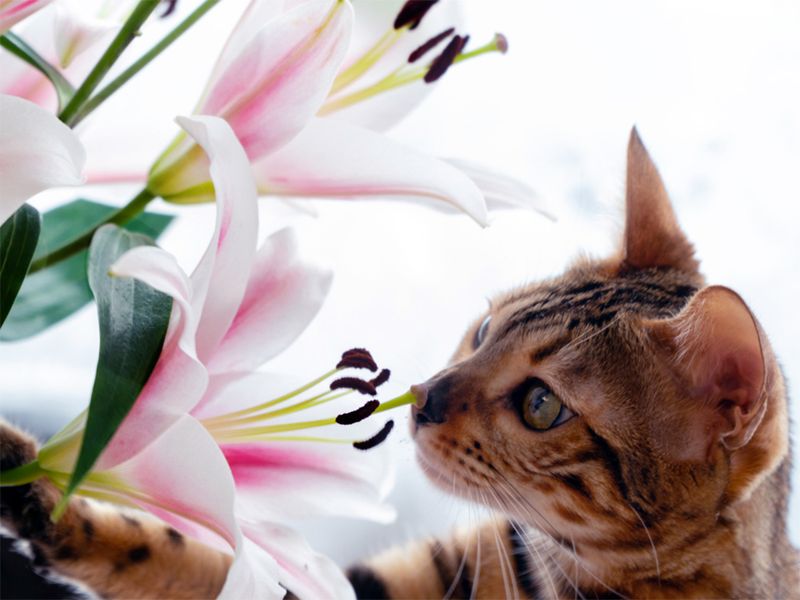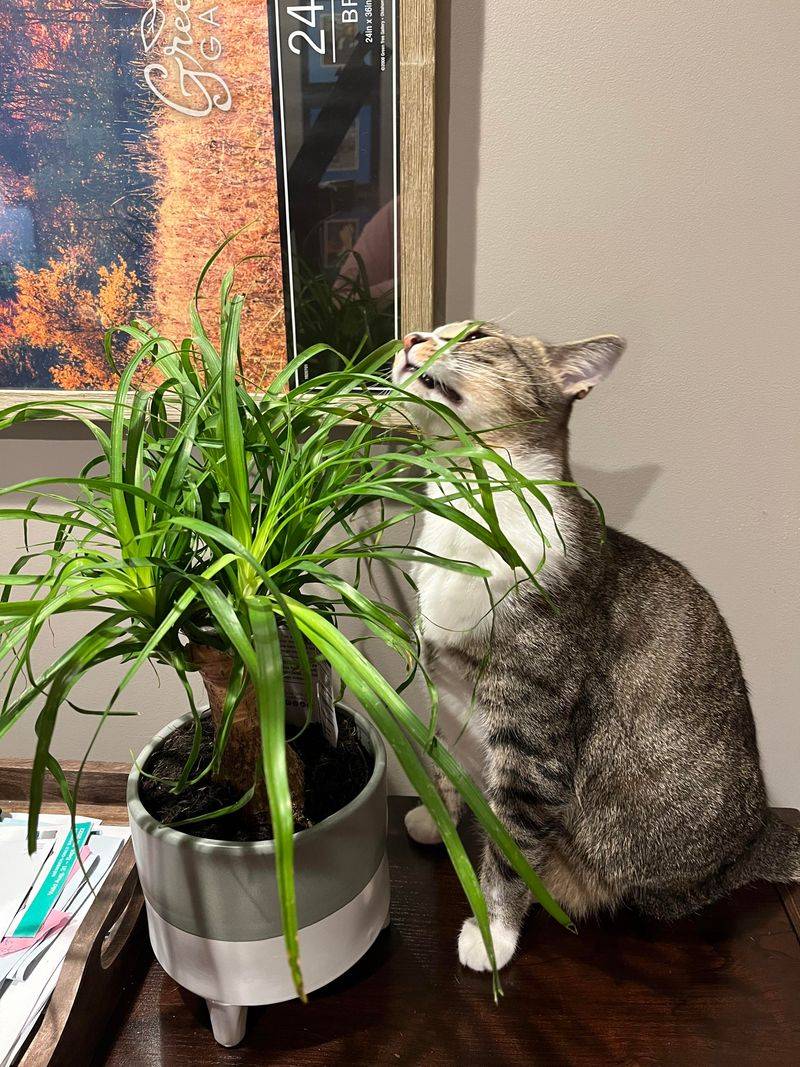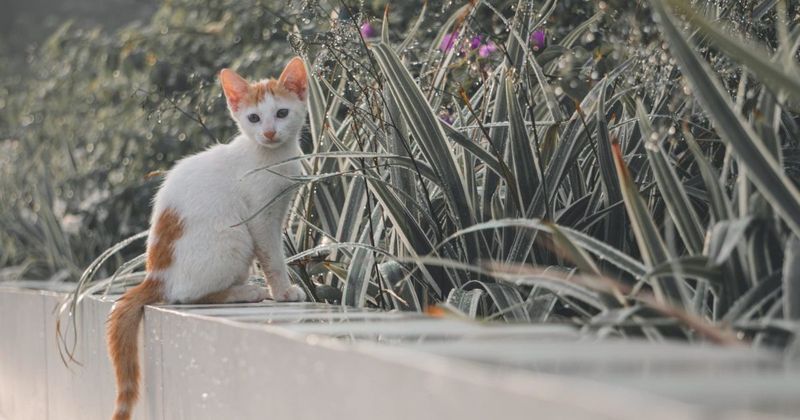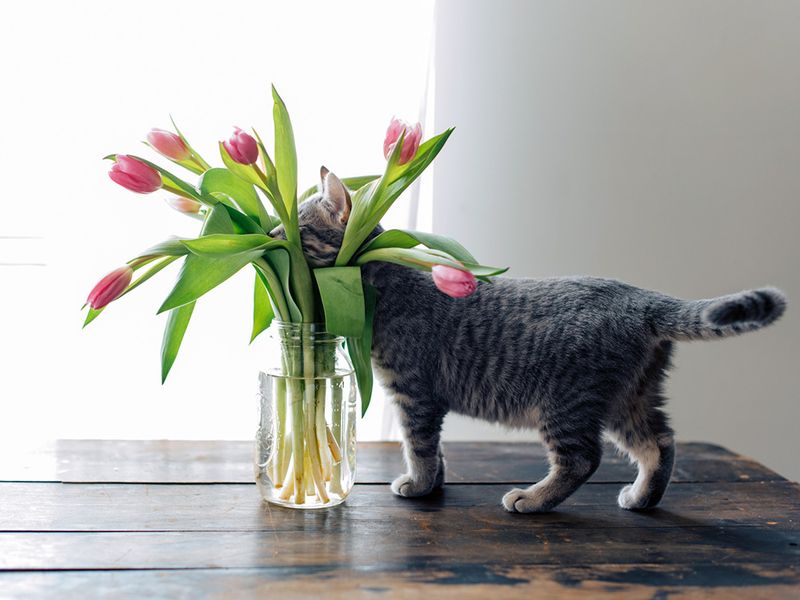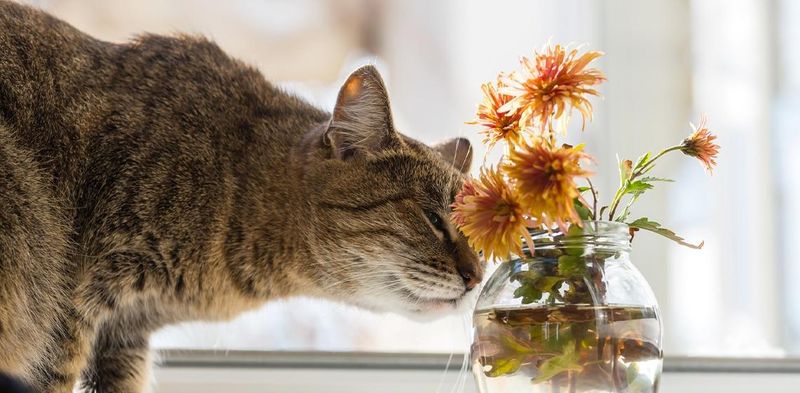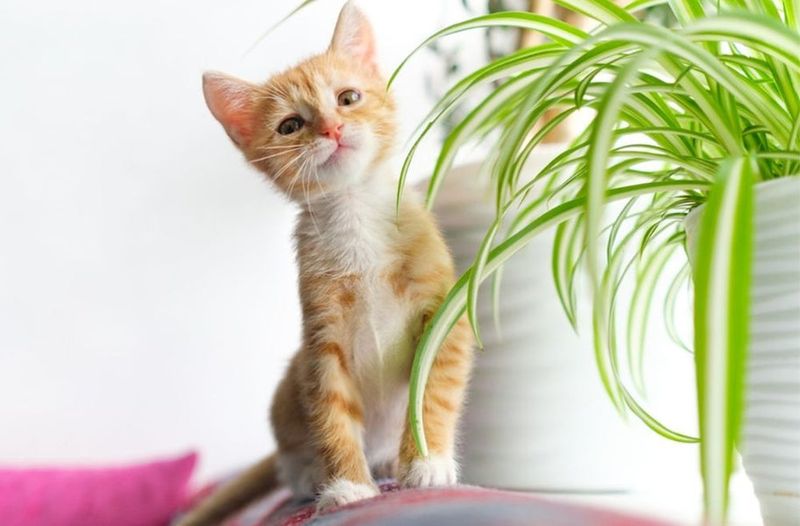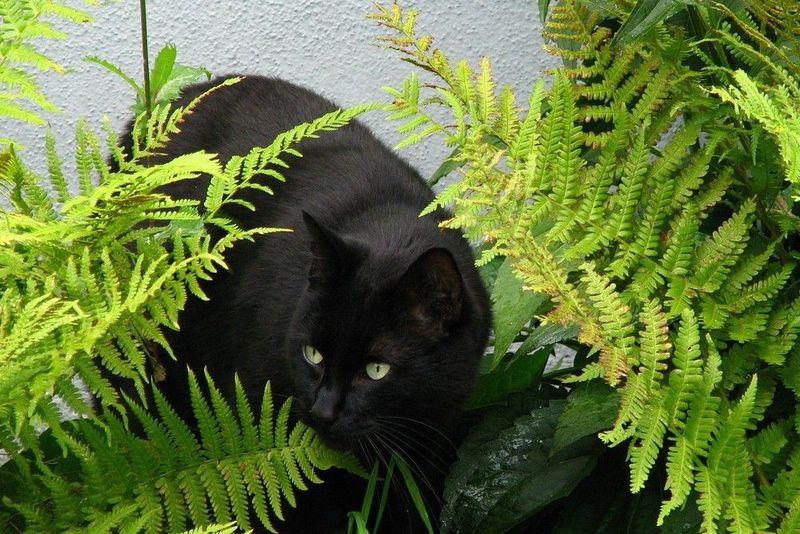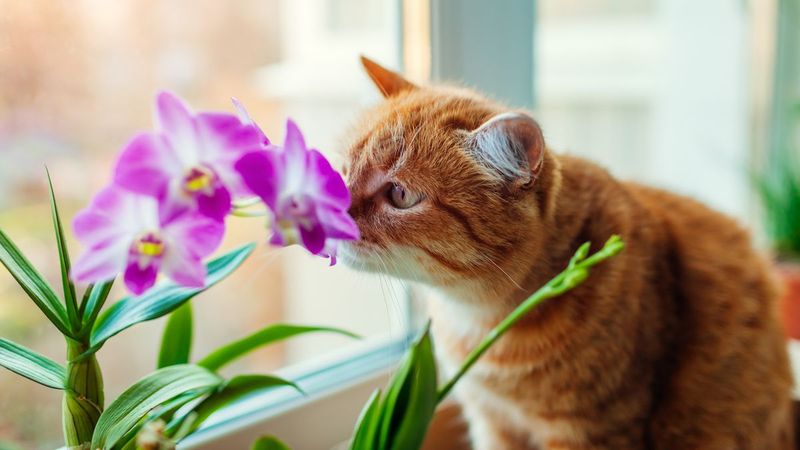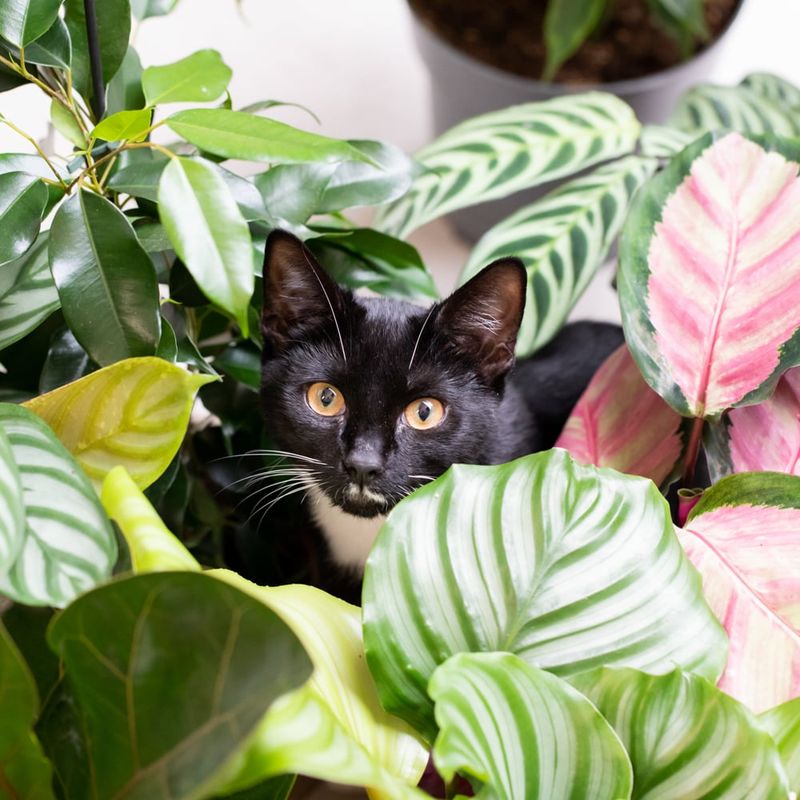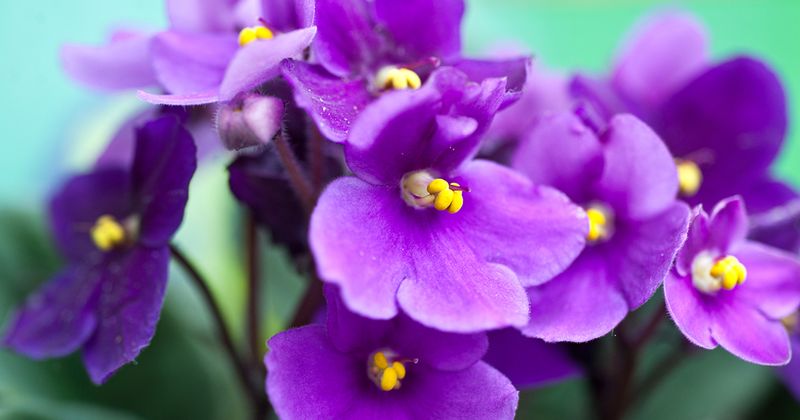📖 Table of Content:
Cats are naturally inquisitive, often drawn to the sights, smells, and textures of indoor plants. Their playful and investigative instincts can lead them to nibble, paw, or brush up against greenery around the home. Unfortunately, not all plants are safe for curious paws and whiskers.
Many common houseplants contain toxins that can be harmful or even dangerous to feline health. Symptoms from exposure can range from mild irritation to serious medical issues. For pet owners, knowing which plants to avoid is essential to maintaining a safe living space.
Fortunately, there are plenty of beautiful, non-toxic alternatives that can brighten up a home without posing a threat. These cat-safe options offer peace of mind while still satisfying a love for greenery. Choosing wisely helps create a home where both plants and pets can thrive side by side.
1. Lilies
Lilies are elegant and fragrant, often gracing gardens and homes. However, for cats, they are a hidden peril. Ingesting any part of a lily, from the petals to the leaves, can be fatal for cats. Their kidneys can fail, leading to severe illness or death.
Even a small amount of pollen licked from their fur can pose a threat. If you suspect your cat has been in contact with lilies, seek veterinary care immediately. It’s vital for cat owners to keep these beautiful but hazardous plants out of reach, ensuring safety and well-being.
2. Sago Palm
With its lush, tropical look, the sago palm is a favorite in many homes—but it’s not safe for cats. Even small amounts can trigger severe symptoms like vomiting and diarrhea, and in serious cases, liver damage. The seeds are the most toxic, containing a powerful compound known as cycasin.
Cats intrigued by the spiky leaves may face severe health risks if they chew or ingest them. To prevent any mishaps, it’s advisable to avoid keeping Sago Palms in homes with cats, opting instead for safer plant options that can still provide a touch of greenery.
3. Oleander
The bold blossoms of the oleander plant may brighten a space, but they come with serious risks for cats. Toxic in every part, oleander can cause reactions such as drooling, stomach pain, and seizures. The cardiac glycosides it contains may severely disrupt heart rhythms.
Given the severe risks, pet owners must recognize and remove oleander from their surroundings. Instead, consider safer flowering plants that provide beauty without the accompanying hazards, ensuring a cat-friendly garden or home.
4. Azaleas
Known for their colorful blossoms, azaleas are popular in both gardens and floral arrangements. However, they can be extremely dangerous to cats. The grayanotoxins they contain may trigger symptoms ranging from gastrointestinal upset to life-threatening heart issues.
While these plants create vibrant displays, cat owners need to exercise caution. Removing azaleas from spaces accessible to cats can prevent accidental ingestion. Alternatively, consider planting non-toxic flora to ensure the safety and health of your furry companions.
5. Tulips
Tulips, a herald of spring, are admired for their vibrant colors and elegant forms. However, their bulbs contain toxins that can harm cats. Ingestion may result in drooling, nausea, and irritation of the mouth and throat.
The allure of tulips can inadvertently attract curious cats, leading to potential health issues. Pet owners should ensure their gardens are free of tulips or any plant that can pose a danger. Instead, celebrate the arrival of spring with safe alternatives that bring color without compromising your pet’s health.
6. Chrysanthemums
With their vibrant blooms and striking forms, chrysanthemums are a common decorative favorite. However, they can be harmful to cats if ingested, causing symptoms like digestive upset and dermatitis. The toxic compounds involved are pyrethrins and sesquiterpene lactones.
While chrysanthemums can enhance visual appeal, pet owners need to remove such risks from their homes. By choosing pet-friendly plants, one can enjoy an equally beautiful environment without health concerns for their beloved cats.
7. English Ivy
English Ivy, with its trailing vines and lush appearance, is a popular indoor plant. However, it’s a hidden hazard for cats. Ingesting ivy can lead to vomiting, drooling, and abdominal pain. The plant contains compounds like triterpenoid saponins that are harmful to cats.
To ensure a safe home environment, pet owners should avoid having English Ivy within reach of their cats. Instead, consider safer alternatives that allow for the same aesthetic appeal but without posing any health risks to curious feline friends.
1. Spider Plant
Loved for their ease of care, spider plants are a popular pick among cat owners. The plant’s arching leaves are irresistible to playful paws, often becoming a target for gentle bites. Luckily, they’re completely safe for cats to interact with.
Spider plants are ideal for hanging baskets, keeping them out of reach of mischievous paws while adding greenery to your home. Their resilience and air-purifying qualities make them a perfect choice for cat owners seeking a harmonious balance between plant beauty and pet safety. Enjoy the peace of mind they bring!
2. Bamboo Palm
The bamboo palm offers a touch of the tropics with its lush, arching fronds and is non-toxic to cats. These palms can brighten up a room, providing a safe environment for your feline friend. Their gentle, feathery leaves are not only beautiful but also harmless, even if curious cats decide to explore them.
Bamboo palms are also known for their air-purifying abilities, making them a healthy addition to any home. Embrace the charm of these palms, knowing they won’t pose any risks to your beloved pet.
3. Boston Fern
Renowned for their lush appearance and fine fronds, Boston ferns are a wonderful addition to any home. They’re non-toxic to cats, ensuring peace of mind for pet owners. These ferns flourish in indirect light, providing an elegant touch to indoor spaces.
Cats might find the trailing fronds enticing, but rest assured, there’s no cause for concern. The Boston fern’s ability to purify the air adds to its appeal. It’s a wonderful way to bring a bit of the outdoors inside, while keeping your cat’s welfare in mind.
4. Orchid
Orchids, with their exotic and intricate blooms, are a delightful addition to any home and are safe for cats. Their captivating flowers come in various colors, offering a vibrant display without any toxic risks to your feline friends.
These elegant plants thrive in well-lit areas and can be a conversation starter due to their unique appearance. Orchids make an excellent choice for those looking to add elegance and color to their decor, providing a worry-free environment for cats to explore and enjoy.
5. Areca Palm
Known for its elegant, sweeping fronds, the areca palm is a perfect choice for pet owners. This non-toxic palm thrives indoors, adding a touch of nature to your home. With its cat-friendly nature, it’s safe even if your feline friend takes an interest in its leaves.
Areca palms are also excellent at improving indoor air quality, making them a smart addition to any room. Pet owners can enjoy the tropical ambiance these palms provide, knowing they’re choosing a safe option for their cats.
6. Calathea
Calathea plants are known for their striking, patterned leaves and are perfectly safe for cats. These plants can bring a splash of color and texture to any room.
With their non-toxic nature, you can have peace of mind while your cat explores or rests nearby. Calatheas prefer a humid environment and indirect light, making them ideal for bathrooms or shaded corners. Their unique leaf designs add an artistic touch to your decor, ensuring both beauty and safety in a cat-friendly environment.
7. African Violet
With their velvety leaves and brilliant blooms, African violets make a wonderful, cat-safe addition to any home. They flourish in bright spaces and are simple to care for, adding a splash of color to your décor. These charming plants are the perfect choice for a pet-friendly garden indoors.
African violets are perfect for windowsills or tabletops, adding a splash of color while ensuring safety. With minimal maintenance, they offer a delightful way to enjoy gardening indoors, providing a worry-free experience for pet owners.

